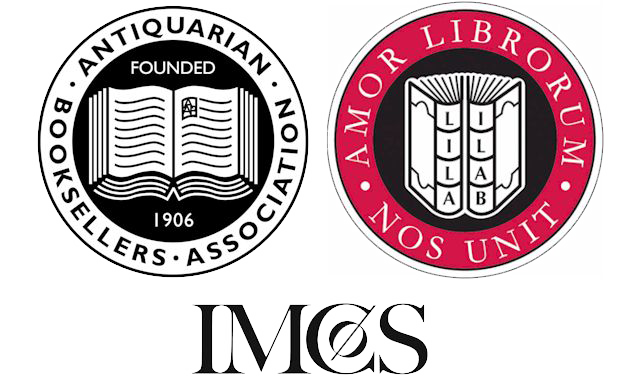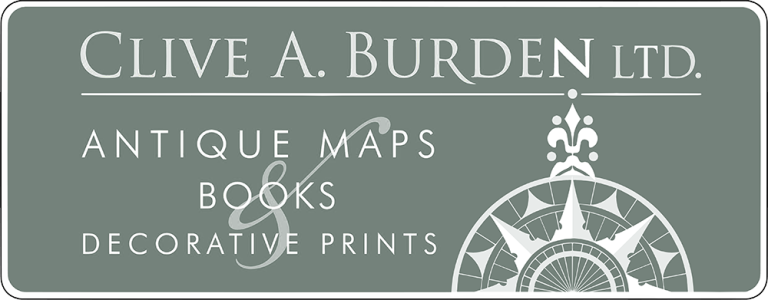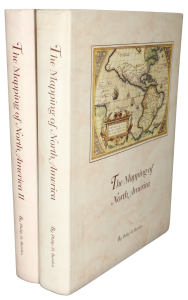Rare Maps and Prints
- World & Celestial
- North America
- West Indies, South & Central America
- British Isles
- British Isles
- English counties
- Large-scale
- Bedfordshire
- Berkshire
- Buckinghamshire
- Cambridgeshire
- Cheshire
- Cornwall
- Cumberland
- Derbyshire
- Devon
- Dorset
- Durham
- Essex
- Gloucestershire
- Hampshire
- Herefordshire
- Hertfordshire
- Huntingdonshire
- Islands
- Kent
- Lancashire
- Leicestershire
- Lincolnshire
- Middlesex
- Norfolk
- Northamptonshire
- Northumberland
- Nottinghamshire
- Oxfordshire
- Rutland
- Shropshire
- Somerset
- Staffordshire
- Suffolk
- Surrey
- Sussex
- Warwickshire
- Westmoreland
- Wiltshire
- Worcestershire
- Yorkshire
- Wales
- Scotland
- Ireland
- Western Europe
- Eastern Europe
- Middle East
- Africa
- Asia
- Australasia & Pacific
- Decorative Prints
- Title Pages
Mr. Philip D. Burden
P.O. Box 863,
Chalfont St. Giles, Bucks HP6 9HD,
UNITED KINGDOM
Tel: +44 (0) 1494 76 33 13
Email: enquiries@caburden.com
‘John Thornton (1641-1708) was one of the most important of the so-called Thames School of chartmakers. Collectively they provided the initial impetus for the great era of English mapmaking, and are classified together because they were stylistically alike, and all had premises along or near the River Thames. Thornton was one of the few from the school who made the transition to become a publisher. There is some debate as to whether he might also have been an engraver. This map is now recognised as his earliest published chart. As the map centres on the largely French controlled regions of North America the purpose of its publication must have been because of the Hudson Bay Company. Further evidence for this comes from the advert for its sale placed in the ‘London Gazette’ for 20-24 February 1673 stating ‘A new Map of the North part of America from Hudson Streights, commonly called the Norwest passage, unto Prince Ruperts River …’. Indeed, it is the earliest map to record the company’s activities.
Pierre Esprit Radisson and his brother-in-law, Médard Chouart, Sieur des Groseilliers discovered the rich fur-trading region surrounding Lake Superior in 1659. Because they traded illegally and did not share their profits with the French government their huge cargo of furs was seized. Transferring their allegiance to the English they encouraged trading in the region. In 1668 thirteen merchant adventurers sent the ‘Nonsuch’ under the command of Zachariah Gilliam to the region of Hudson Bay to investigate the fur-trading abilities of the region. It was perceived that the southerly reach of James Bay would go as far as the rich fur-trading grounds that the French enjoyed. A legend to the east of James Bay states ‘at Prince Ruperts River Capt. Zachariah Gillam wintered who found a civil entertainment by the Natives being very willing to Traffique with the English their cheif trade being Bever skins’. Both ‘Prince Ruperts River’ and ‘Fort Charles’ are identified. Following the return of the Nonsuch in 1669 the judgements of Radisson and Groseilliers were vindicated. The Hudson Bay Company was formally chartered in 1670 by Charles II, although it had been trading as an informal group of men for some years already. Probably because of the hostility of the region’s climate and the nature of the way in which it was to finance itself, i.e. fur-trading, it was decided that trade and not colonisation would best suit the company. Its domain covered all the lands draining into Hudson’s Bay, around 1.4 million square miles, or one third of present-day Canada. The region was named Prince Rupert’s Land in honour of Charles II’s cousin Prince Rupert, the first governor of the company. Hudson Bay’s proximity to the English colonies in New England is nicely displayed. The Province of mayne is identified for the first time and an inset of the southern colonies is also included.
The inset of the southern colonies is not some casual insertion; some effort had been put into making the map as up-to-date as possible. This illustrates perfectly the professional background of Thornton, to whom producing the most accurate map possible would have been a matter of course. The results of Lederer’s recent voyages published in 1672 are incorporated here with the inclusion of ‘Savana’ and ‘Deserta Arenosa’. One interesting feature that appears not to have been recorded by any previous carto-bibliographer is the naming of the inland lake in the south ‘Ashleys lake’. Lederer had called it the ‘Lake of Ushery’, it was even so named on the John Locke manuscript c.1671 used by the Lords Proprietors. The clear source here is the John Ogilby map ‘A NEW DISCRIPTION OF CAROLINA’, also known as the First Lords Proprietors map. This sequence helps us to place a much more accurate date on the publication of that map as it is unlikely that Ogilby would have utilised the Thornton. Ogilby drew directly upon the Lords Proprietors who helped considerably in its production’ (Burden). I have only been able to record six examples. These are found at the National Archives of Canada, the Clements Library, the John Carter Brown Library, the Royal Geographical Society, London. A sixth example appeared on the market since publication of my book which was repaired and backed on tissue. This is in perfect condition. Provenance; Private American Collection x 2; Private English Collection acquired 2004. Black (1975) no. 5; Burden II 432; Cumming & de Vorsey (1998) nos. 65 & 89; Kershaw (1993-98) I no. 216; McCorkle (2001) no. 673.4; Smith (1978); Tyacke (1978) no. 22; Verner (1975).
Pierre Esprit Radisson and his brother-in-law, Médard Chouart, Sieur des Groseilliers discovered the rich fur-trading region surrounding Lake Superior in 1659. Because they traded illegally and did not share their profits with the French government their huge cargo of furs was seized. Transferring their allegiance to the English they encouraged trading in the region. In 1668 thirteen merchant adventurers sent the ‘Nonsuch’ under the command of Zachariah Gilliam to the region of Hudson Bay to investigate the fur-trading abilities of the region. It was perceived that the southerly reach of James Bay would go as far as the rich fur-trading grounds that the French enjoyed. A legend to the east of James Bay states ‘at Prince Ruperts River Capt. Zachariah Gillam wintered who found a civil entertainment by the Natives being very willing to Traffique with the English their cheif trade being Bever skins’. Both ‘Prince Ruperts River’ and ‘Fort Charles’ are identified. Following the return of the Nonsuch in 1669 the judgements of Radisson and Groseilliers were vindicated. The Hudson Bay Company was formally chartered in 1670 by Charles II, although it had been trading as an informal group of men for some years already. Probably because of the hostility of the region’s climate and the nature of the way in which it was to finance itself, i.e. fur-trading, it was decided that trade and not colonisation would best suit the company. Its domain covered all the lands draining into Hudson’s Bay, around 1.4 million square miles, or one third of present-day Canada. The region was named Prince Rupert’s Land in honour of Charles II’s cousin Prince Rupert, the first governor of the company. Hudson Bay’s proximity to the English colonies in New England is nicely displayed. The Province of mayne is identified for the first time and an inset of the southern colonies is also included.
The inset of the southern colonies is not some casual insertion; some effort had been put into making the map as up-to-date as possible. This illustrates perfectly the professional background of Thornton, to whom producing the most accurate map possible would have been a matter of course. The results of Lederer’s recent voyages published in 1672 are incorporated here with the inclusion of ‘Savana’ and ‘Deserta Arenosa’. One interesting feature that appears not to have been recorded by any previous carto-bibliographer is the naming of the inland lake in the south ‘Ashleys lake’. Lederer had called it the ‘Lake of Ushery’, it was even so named on the John Locke manuscript c.1671 used by the Lords Proprietors. The clear source here is the John Ogilby map ‘A NEW DISCRIPTION OF CAROLINA’, also known as the First Lords Proprietors map. This sequence helps us to place a much more accurate date on the publication of that map as it is unlikely that Ogilby would have utilised the Thornton. Ogilby drew directly upon the Lords Proprietors who helped considerably in its production’ (Burden). I have only been able to record six examples. These are found at the National Archives of Canada, the Clements Library, the John Carter Brown Library, the Royal Geographical Society, London. A sixth example appeared on the market since publication of my book which was repaired and backed on tissue. This is in perfect condition. Provenance; Private American Collection x 2; Private English Collection acquired 2004. Black (1975) no. 5; Burden II 432; Cumming & de Vorsey (1998) nos. 65 & 89; Kershaw (1993-98) I no. 216; McCorkle (2001) no. 673.4; Smith (1978); Tyacke (1978) no. 22; Verner (1975).
THORNTON, John
A New Mapp of the north part of AMERICA from Hudson Straights commanly call'd the NOR WEST PASSAGE Including Newfoundland New Scotland New England Virginia Maryland & Carolena
Made and sold by John Thornton at the signe of England Scotland & Ireland in the Minories, London, 1673
435 x 540 mm., in superb condition.
Stock number: 9109
SOLD






